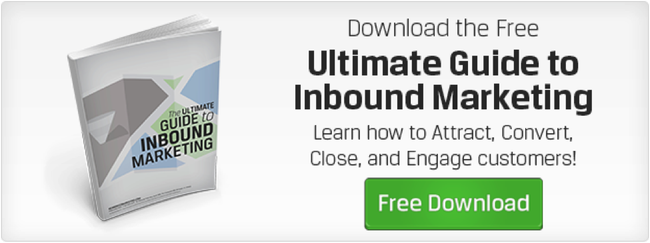 This post originally appeared on Inbound Insiders, a new section of Inbound Hub. To read more content like this, subscribe to the Inbound Insiders section.
This post originally appeared on Inbound Insiders, a new section of Inbound Hub. To read more content like this, subscribe to the Inbound Insiders section.
Editor's Note: Since this post was published, Google has removed Authorship functionality entirely. Read more here.
Another change in Google’s algorithm means another change in strategy for all of us inbound marketers.
Thankfully, this time around, it’s not as massive or as jolting (we know, you’re still settling down from Hummingbird, right?), but rather the change comes in the form of Google Authorship.
Matt Cutts, head of Google’s webspam team, hinted at these changes back in October during his keynote speech at PubCon, and now we’re seeing them in action.
According to Search Engine Land, Cutts has confirmed that Google has applied a 15% reduction in the amount of rich snippets displayed in the search results.
What is Google Authorship?
If you don’t know what Google Authorship is, let’s just recap quickly.
Over the past year, you may have noticed that search engine results pages (SERPs) have increasingly become more visual, with little pictures of the author next to the articles. The images are pulled from the author’s Google+ profile, along with some other information, like their name and the number of Google+ followers they have.
Now, the authorship tags only showed up if someone had verified their account, which only 12% of the top tech blogs did. Chances were, if you had the tag on your own website, your posts would really stand out, seem more trustworthy, and, ultimately, get clicked on more often.
What changes are happening?
As Cutts mentioned in his speech, Google had been testing how a reduction in authorship would affect search, and they found that by reducing authorship by 15%, they actually saw an increase in quality. Although they didn’t make the definition of “quality” crystal clear, what we gathered from his speech was this:
- There would be a reduction in instances of Google authorship showing up in SERPs coming
- The focus would be on showing “high-quality” authors in SERPs
- It seems the goal was to give searchers content they could trust and really want to read
Over the past few weeks, we have seen a decline in the authorship results. From the Moz Google SERP Feature Graph, it is clear this change went into effect sometime around mid-December and has been slowly declining ever since.
As you can see, there was a big drop around December 12, where it then leveled off for a few days and took another nosedive around December 16. Since then, things have been pretty steady, with little dips here and there.
We imagine this will continue to drop as time goes on, especially since Google has indicated there will be a 15% decline.
Here's how this might affect you.
Of course, with any change that Google makes, our minds immediately jump to, “How is this going to affect my business?”
Since there's been a decrease in the number of authors being shown in search results, it's important you understand the reasoning behind it -- in other words, knowing how Google classifies author profiles:
1) Full Author Profile -- This includes what we outlined above: a photo, a byline, and the number of Google+ followers.
2) Partial Author Profile -- With this tier, there is no photo next to the article, but the byline and number of Google+ followers still shows up.
3) No Author Profile -- Finally, with the bottom tier, there is no information about the author at all -- it’s just the page title and the URL.
(Hat tip to Mark Traphagen for clearly explaining these profile types in his excellent Virante article.)
You could end up in any of these buckets,
- The emphasis doesn’t seem to be on the authors themselves, but rather on the authority of the sites they’re writing for.
- Your Google+ following doesn’t have an effect on the results -- there are some authors showing up that have 10K+ followers and other that only have 50.
- It’s site-by-site not author-by-author -- while one author’s profile might be showing up for one site, it isn’t showing up on another (this ties into the first point).
- Google+ posts are showing full profiles.
What should you do?
We know that change can be scary, but we’re definitely not advising that anyone jump ship from Google Authorship. These changes are still relatively new and therefore, are still being tested, so leave your author tags on your site. Just because it's a little bit harder now, it's not like your authorship tags never have a chance of showing up in SERPs.
We suggest that you start paying attention to the search results you’re seeing -- both for what you’re searching and also for your own content. Who is showing up? What types of sites are they writing for? Where is your content/author profile showing up in search results? If you start to notice trends, take note and advantage of that.
If you’re seeing that one type of content is getting shown more frequently than others, or your guest post for one site shows your profile, while another one doesn’t, just make some tweaks to your strategy. Try writing about that particular topic more often so you can start to establish authority (this goes back to keyword strategies as well, which is a whole other blog post!).
Search engine results with a full Google+ author profile tend to have better clickthrough rates than those that don't. If this update does, in fact, help Google use these results as an indicator of quality, readers will probably begin -- and continue -- to see them as such as well. That means if you're not already showing up in SERPs with an author profile, it's still certainly something to aspire to, since it'll be one more indicator of the quality of your content.
Bottom line? As always, and even more importantly now, make sure that you are producing top-quality content that aligns with your buyer personas. Use your inbound marketing knowledge to your advantage -- you know what your customers want, what challenges they face and how your solution aligns with each of these things. That’s where your focus should be.
If you can establish trust with your own content, build your authority in your particular industry, and promote your content on other authoritative sites, we’re guessing these changes will have less of an effect on you.
Now we’d like to hear from you! Have you seen these changes affecting your content or search results? Any trends you’ve noticed over the last month? Let us know in the comments below!


![The Top Search Engines Other Than Google [+ Some You Might Not Expect]](https://www.hubspot.com/hubfs/other%20search%20engines%20header%20image%20.jpg)







